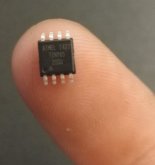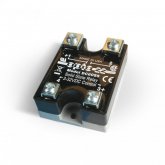Will made a great video about using a relay to shut down inverter if battery gets undervoltage.
But there seems to be some discussion as to how long the relay will last and arc's and on an on. The victron battery protect will not work because the capacitators charge too fast when switched on and may destroy the BP.
So with all this in mind why not just repolace the inverters switch with a relay or small MOSFET. this will turn inverter off without worring about how many amps are rushing through the relay. Also it will turn inverter on without rushing amps in to charge capacitors.
It may not be pretty but wouldnt this be a easier solution in the end?
But there seems to be some discussion as to how long the relay will last and arc's and on an on. The victron battery protect will not work because the capacitators charge too fast when switched on and may destroy the BP.
So with all this in mind why not just repolace the inverters switch with a relay or small MOSFET. this will turn inverter off without worring about how many amps are rushing through the relay. Also it will turn inverter on without rushing amps in to charge capacitors.
It may not be pretty but wouldnt this be a easier solution in the end?





